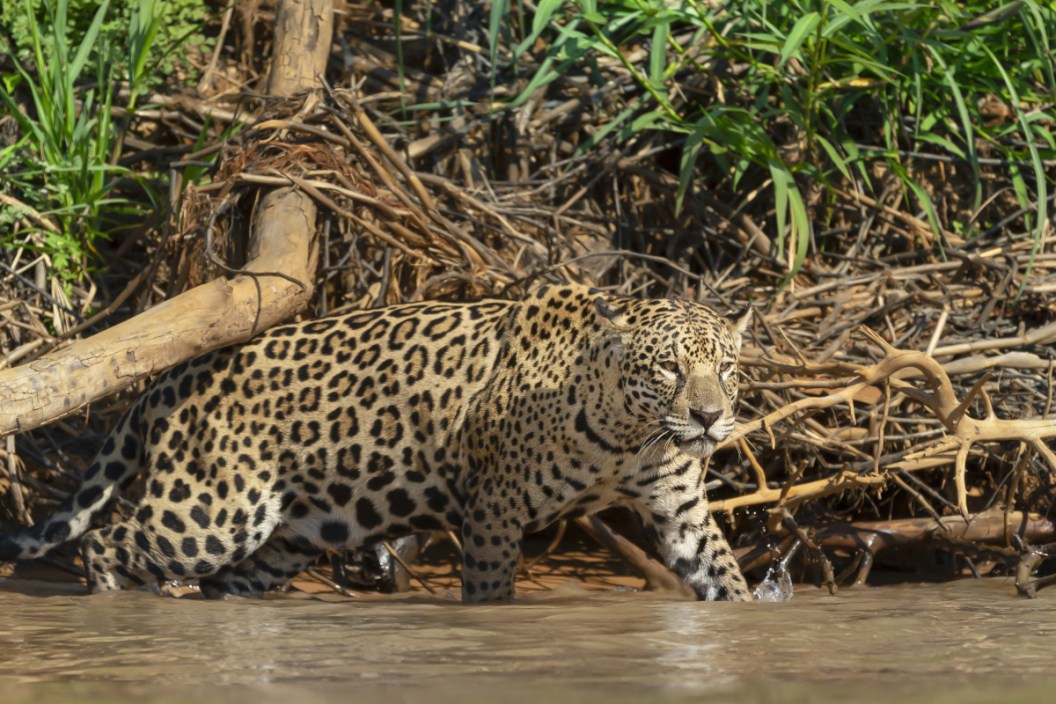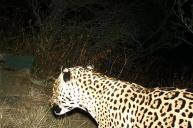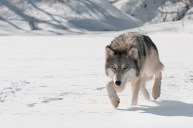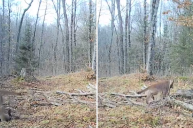These animals are starting to pop up more and more often around North America.
North America is lucky to be home to a rich diversity of wildlife from one side of the continent to the other. Unfortunately, as the United States, Canada and Mexico were settled, many species were either overhunted or displaced due to habitat destruction.
In many cases, they ended up on the endangered species list.
But conservation programs have brought many animals like the bald eagle, wild turkey and wolves back from the brink of extinction. Some programs have been so successful that previously endangered animals are now spreading to new areas or back into their original home ranges thanks to programs by the U.S. Fish and Wildlife Service and many state agencies and captive-breeding programs.
Here are five such North American animals that are rare, but are popping up in new locations all the time.
Mountain lion/cougar
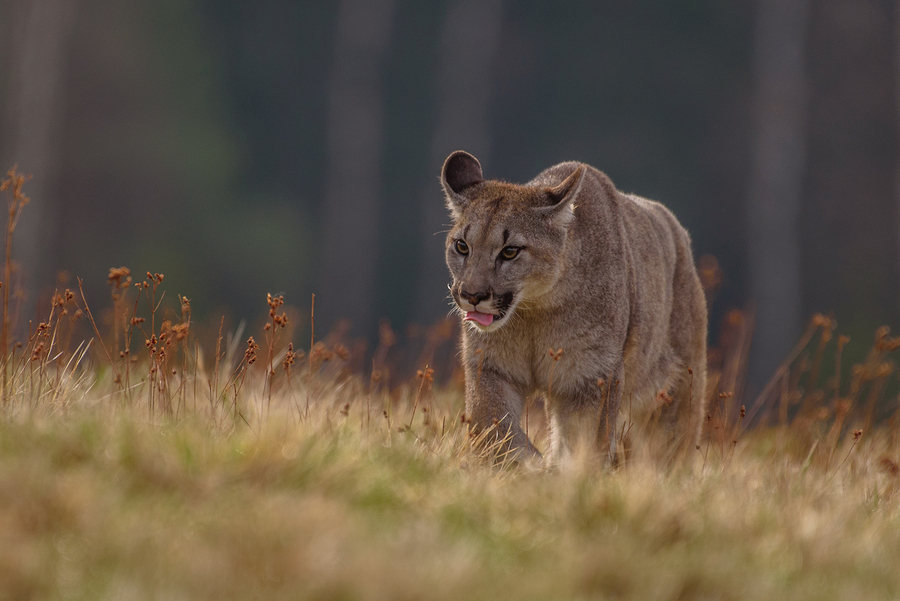
Cougars used to have a historic range across the entire United States, the southern part of Canada and most of Mexico. However, when the first Europeans arrived in North America, they quickly had a devastating effect on native mountain lion populations. Not only were they hunted to extinction in many areas, but habitat loss contributed to their further downfall.
Today most scientists recognize these elusive, shy animals as having a population only in western U.S. states and Canadian provinces. The one big exception is a population living in Florida.
But mountain lion sightings continue to pop up in the eastern United States, and perhaps most notably in the Midwest. I live in Michigan and throughout the 90s, rumors swirled that the cougars were back. The Michigan Department of Natural Resources still maintains they are extinct here. However, they have had egg on their face numerous times because people keep seeing mountain lions.
Two years ago, the Michigan DNR finally confirmed a sighting in the lower peninsula thanks to a photo taken of one crossing a road. The big cat passed right in front of a mailbox, making it easy to estimate the size of the animal.
Since then, more and more photos are being captured on trail cameras. Scat has been found and even a few dead cats have turned up. Despite all this, the DNR still says there's no breeding population. They are speculating most sightings are escaped illegal exotic pets, but it seems more and more likely to us the cats are back.
The reason these animals are spreading is in their nature. Radio-collared cougars have been shown to wander hundreds of miles in search of food or mates. In 2017, a female cougar was shot and killed in Iowa, a place where the animals are supposed to be extinct. The Iowa DNR noted that when the lineage of mountain lion discoveries in the state has been traced, it always seems to lead back to either Nebraska or South Dakota. These animals are covering some ground!
Wolves
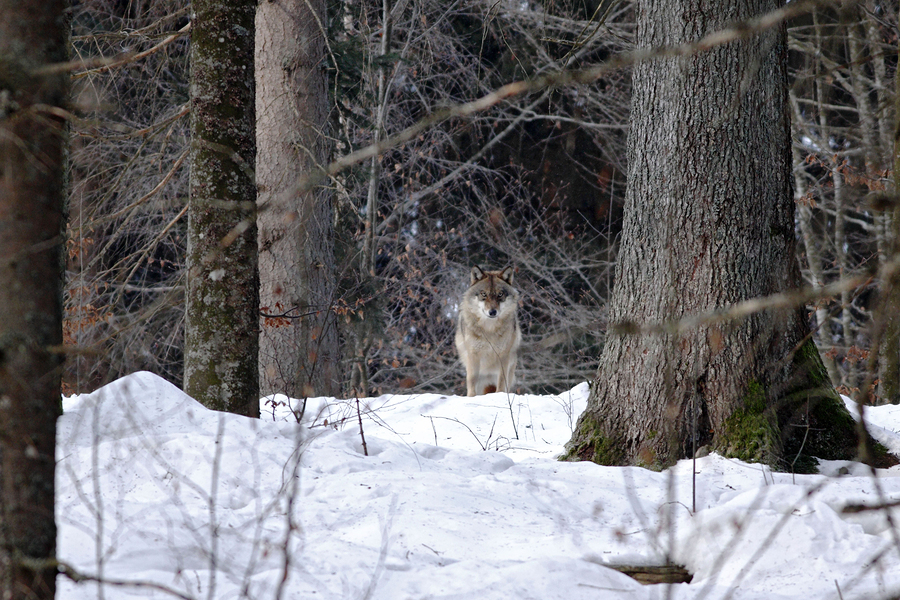
The story of the wolf in North America is very similar to the mountain lion, but it seems like wolves have been vilified much more over the centuries. Wolves were found throughout much of North America at one time, but hunting pressure and loss of habitat was intense for hundreds of years. Bounties in many states had a devastating effect on wolf populations.
In the 1970s, wolves received federal protections under the Endangered Species Act. There are two species of note: the red wolf and the gray wolf. Gray wolves have been a controversy. Some places have both eased and strengthened protections for the animals from year to year. This is where hunters, ranchers, farmers, biologists and politicians continue to butt heads.
In some western states, ranchers argue the animals have rebounded enough and are starting to target their cattle and other livestock. At the same time, biologists and scientists argue populations are still in recovery.
We won't get deep into the whole "to hunt or not to hunt" logistics of wolves here, but there is no denying they are slowly but surely returning to their home ranges. Captive-breeding programs have helped reintroduce populations to places like Yellowstone National Park, Arizona, Montana, Washington, Idaho and Wyoming.
Red wolves introduce a whole other level of controversy, mainly because of their resemblance to coyotes. They are nonetheless part of the wolf's overall population in the United States, and represent further evidence that these animals can and do sustain their numbers when given the opportunity.
To add to that, Mexican wolves are slowly returning to their natural ranges, and historic ranges like Michigan and Minnesota have seen a resurgence in the populations as well.
It may still be a while before most people see a wolf in the wild, but look at the current surging population of the wolf's cousin, the coyote. These animals have experienced a population boom to the point that they are becoming a problem in urban areas.
I once saw a coyote on the outskirts of Chicago, just walking through the streets! We're guessing state and federal agencies are keeping a close eye on what happens with the wolves because a spread like that would be inherently more dangerous to the public.
Jaguar
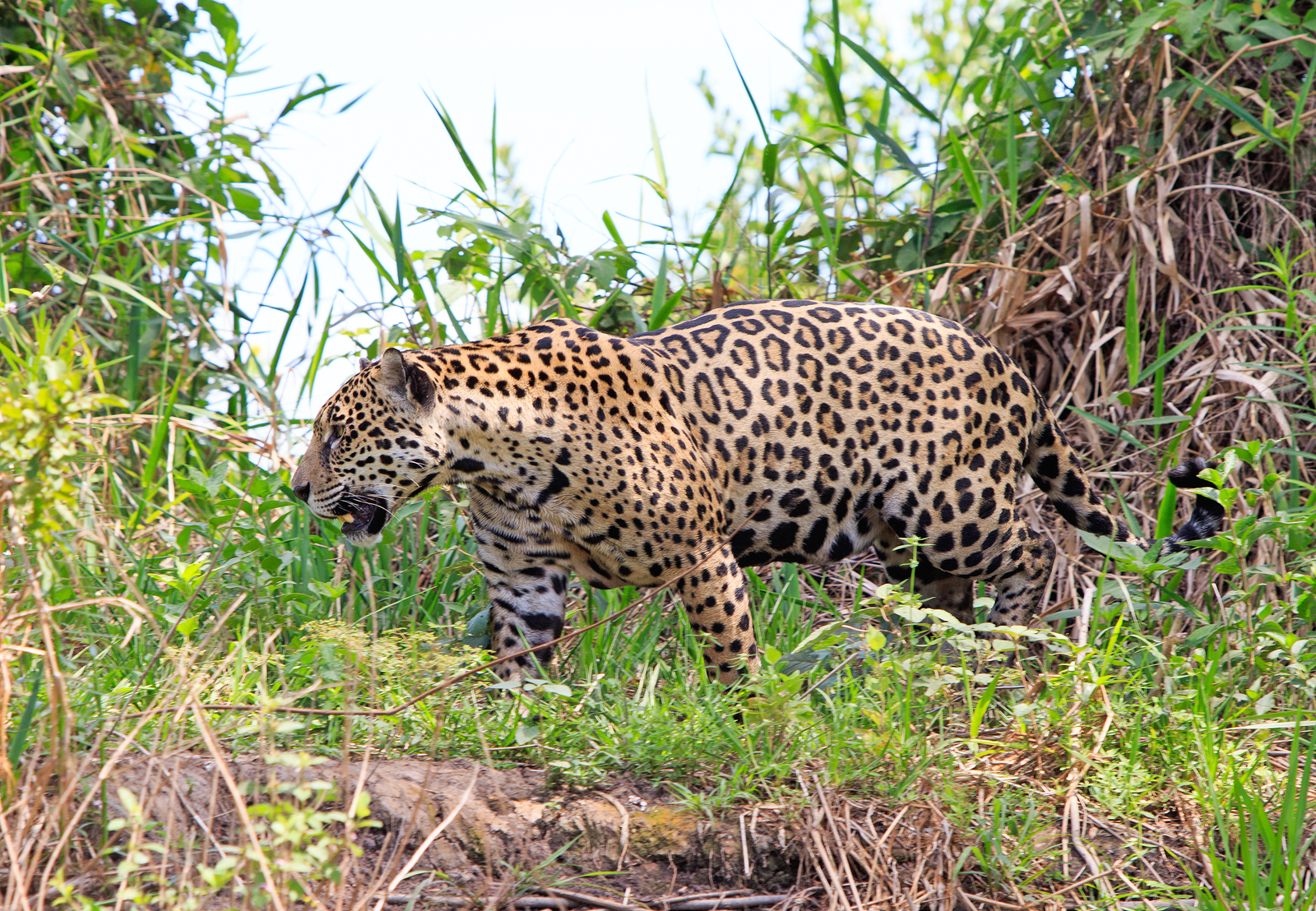
This one surprises many people who don't know jaguars used to be native to the United States. The North American jaguar has to be a contender for the rarest animal here in the U.S. These beautiful, spotted cats used to roam all over the southern U.S. from California, all the way to Arizona, New Mexico and Texas. Researchers have uncovered evidence jaguars may have ranged as far north as Ohio at one point before European explorers arrived.
But over hunting took its toll and some of the last breeding pairs of jaguars were recorded in Arizona in the 1960s. By the time the state took action to protect the big cats, it was too late, and sightings dropped to near zero for decades.
Jaguars were gone long enough that most people had forgotten these animals ever lived here. But in the late 90s, sightings started to trickle in a bit in Arizona. The last 10 years have been an exciting time for researchers. One was treed by a hunter there in 2011 and several other sightings came in from border patrol agents and scientists. In 2016, a trail camera captured an image of one on a U.S. Army installation in the Huachuca Mountains.
One year later, in 2017, another one was captured by another trail camera in the Dos Cabezas Mountains. These big cats are all believed to be wanderers from Mexico, where a breeding population of these spotted cats still lives. Wildlife officials are still investigating jaguar sightings to see if they are indeed making a return to the U.S. In the last couple years, some scientists have expressed concerns about jaguars making a return to their historic ranges if a proposed wall is ever built on the U.S.-Mexico border.
Fallow Deer
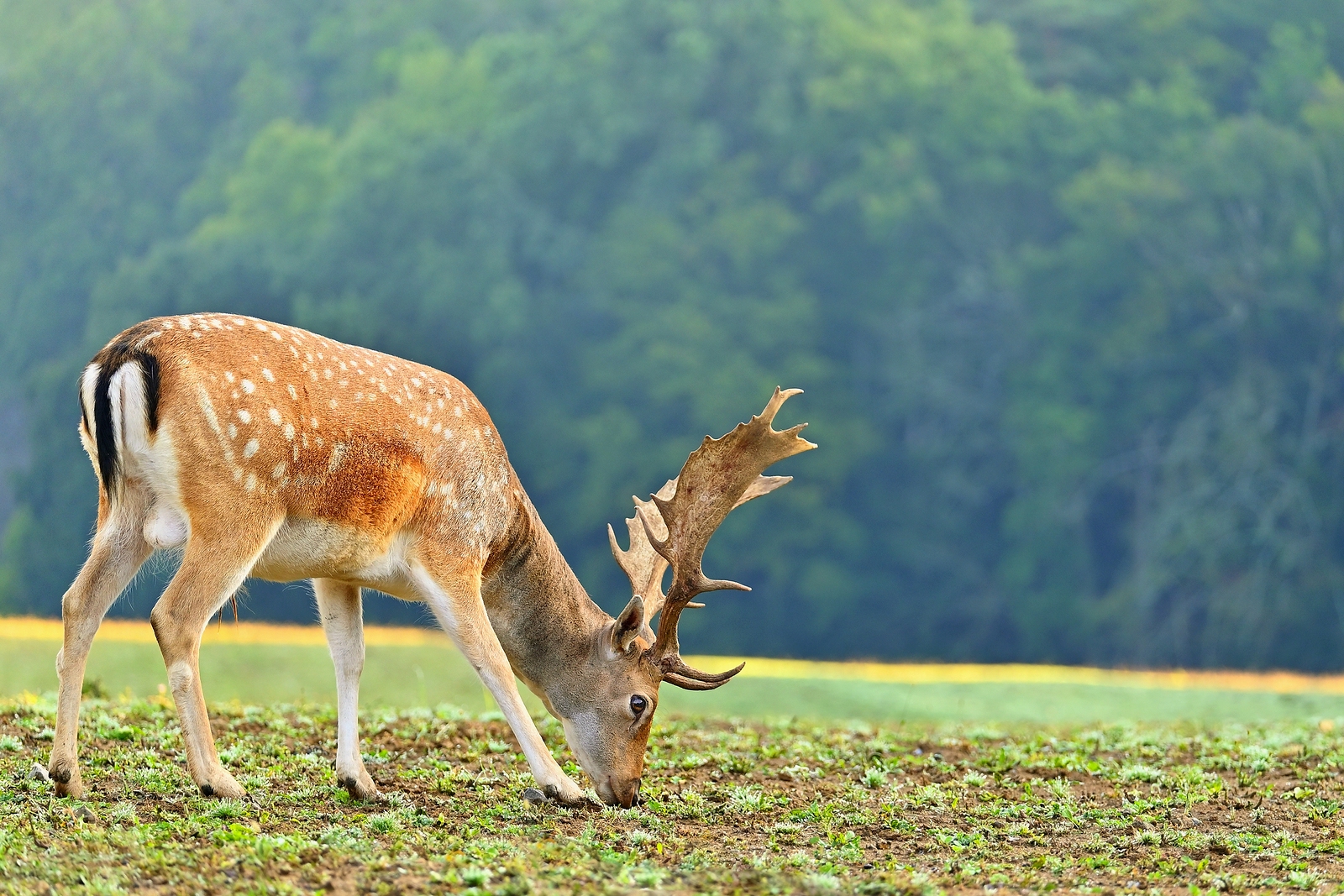
These deer aren't exactly rare where they are native, but as a non-native species, they are uncommon for the United States. These deer originated in Europe, but they've been introduced all over the world. They're highly adaptive, so they've taken well to their new locales and have become headaches for wildlife agencies.
In the United States, Texas is the primary location where you'll find fallow deer. They started off there as captive herds. But eventually some got loose and now there are scattered pockets of them there. From there, the list of places where they can be found seems entirely random and confusing. For instance, there are some in the Point Reyes National Seashore in California and another random population lived for a while on the outskirts of Chicago near the Argonne National Laboratory. But we've since learned the population of this herd has dropped to a single animal.
Still other populations of fallow deer exist in Tennessee, Kentucky and Georgia. Random single animals have popped up in places like Alabama, Arizona, Pennsylvania and Indiana. They also turn up occasionally here in Michigan where I live. I own a skull and antlers from one that I acquired from my mom, who had it gifted to her by one of her students. These deer turn up in some interesting places!
Because this is a non-native species, most states treat fallow deer as a non-game animal and it's perfectly legal to shoot them at any time. In fact, you may even get a thank you from your local state wildlife agency for taking out an invasive animal.
Ocelots

This is another wild cat that used to have extensive ranges in the southern United States. Today that has been reduced to Mexico, Central America and South America. But there is a very small breeding population of ocelots still living in Texas.
This population lives in the Laguna Atascosa National Wildlife Refuge. It's estimated there are only 50 cats there making this one of the rarest animals to spot in the wild.
While Texas is generally considered the last stand of the ocelot in the U.S., sightings and even bodies of ocelots have popped up from time to time in Arizona. It's probably not too much of a stretch to imagine there are some wandering in neighboring states either. This cat's shy and solitary nature means it is an expert at avoiding human detection.
As trail cameras continue to go down in price and gain in popularity, it may be only a matter of time before more ocelots are recorded in the southern U.S.
For more outdoor content from Travis Smola, be sure to follow him on Twitter and check out his Geocaching and General Outdoor Youtube Channels.
NEXT: DID YOU KNOW CARIBOU CAN SEE UV LIGHT?
WATCH
